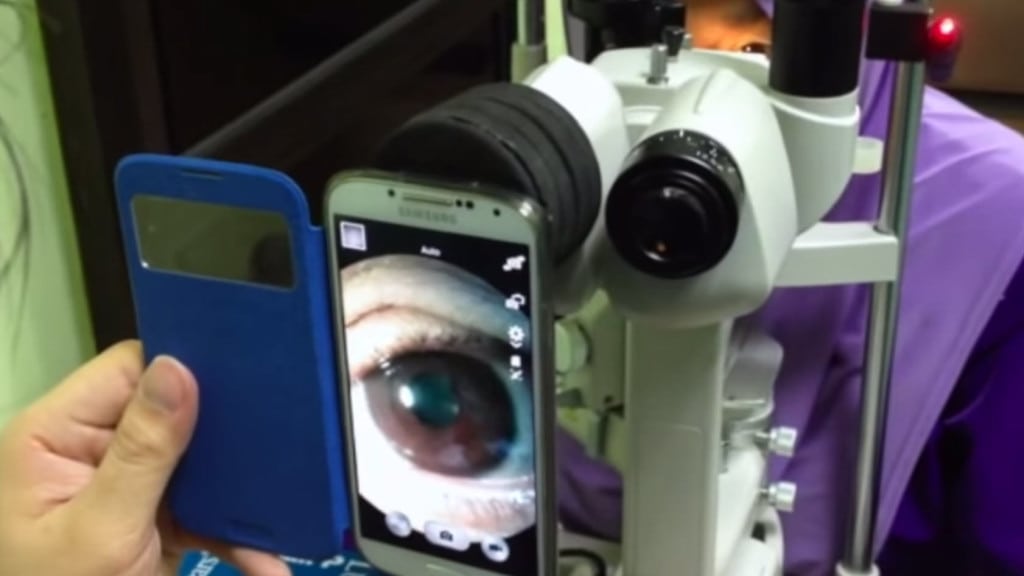 The new age of smartphones is proving itself to be a big boost for the ophthalmology industry.
The new age of smartphones is proving itself to be a big boost for the ophthalmology industry.
What the medical pros are doing is seeing if smartphone cameras can easily take pictures of of the eye with crystal clarity and then be used as a diagnostics tool.
So far a team at Stanford University has created a new developing technology called “EyeGo”, that they say is engineered to give ophthalmologists the ability to get clear pictures of a patient’s eyes by using just a smartphone and already existing ophthalmologic lenses. They had tried using adapters that could be placed on the smartphone onto what is called the slit lamp. Unfortunately the team states that the process was cumbersome and ate up too much tie. They needed a process that was quick, easy, and precise.
Now that smartphones have advanced in technological prowess as well as the lenses the doctors use, they feel they can now catch a pic of the retina by doing indirect ophthalmoscopy with just a smartphone and a 20 diopter lens. They developed an adapter that holds the smartphone and lens stead enough for proper alignment.
The team used the latest in 3D printing to engineer different adapter designs. Even so they’re still improving on this process so that every component can be created with 3D printing. This allowed the team to take pics of the eye from all angles needed for better diagnostics and planning.
The entire process followed the standards of medical experimentation and procedure. The clinical studies look at all the diagnoses that would usually be done via ophthalmologists to detect the presence of diseases and so on. Such as those with diabetes to determine if further treatments are needed.
The team went on to figure out what other things they needed to progress this technological adaptation including an HIPAA compliant means to label as well as organize the photos.
The “EyeGo” is basically to be used for triage as there are better technologies that the adapter, but for on the spot diagnostics, this can be quite useful.
What this all means is that there is a new way to do what ophthalmologists do best. It is a marriage of two or three different technologies that hadn’t come together before and thanks to the team at Stanford under Dr. Chang, have achieved a milestone that can not only help this field of medicine but several. Being able to use a device as simple as a smartphone to help to diagnose patients on the spot is something of a monumental achievement to say the least.
It shows that medical professionals can match together various tools that might not see like they can be matched up for the benefit of all.
Ophthalmology is a precise science and anything that can help in the diagnosis and treatment of patients is highly welcomed. This breakthrough by using smartphones, 3D printing and tried and true present technologies is a signpost to others in the medical industry to try new things, break down barriers and to think outside the box. It’s not perfect, but it’s getting there.
As the ophthalmologists continue to work on the technologies, there’s no telling where they will end up in the short and long term.
Author Bio: Tony Rollan provides consulting services to VSI (http://www.patternless.com/) and he is an author of many articles on all types of optical and ophthalmic equipment. Author blogs about medicine, health, alternative healing, sport and wellbeing.
Image credit: About the Journal of Mobile Technology in Medicine.
